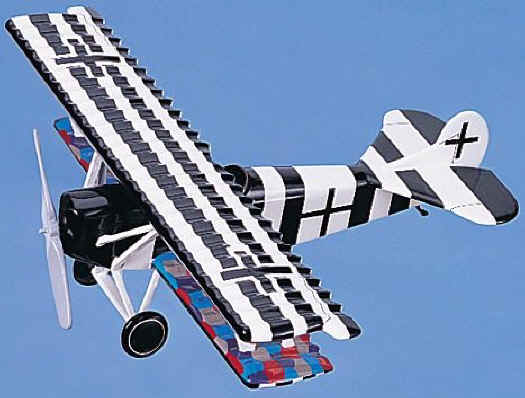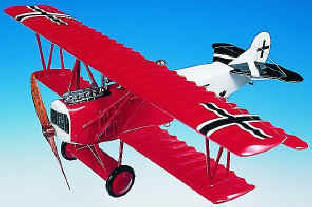|
|
|
 |
Fokker
D-VII Fighter |
 |
First appearing over the
World War I battlefield in May 1918, the Fokker D.VII quickly showed its
superior performance over Allied fighters. With its high rate of climb,
higher ceiling, and excellent handling characteristics, the German
pilots were able to score 565 victories over Allied aircraft during
August 1918.
Designed by Reinhold Platz, the D.VII was chosen over
several other designs during a competition held in January and February
1918. Baron Manfred von Richthofen, the famous Red Baron, flew the
prototype, designated V11. He found it easy to fly, able to dive at high
speed quickly yet remain steady as a rock, and had good visibility for
the pilot. His recommendation virtually decided the competition. To
achieve higher production rates, Fokker, the Albatross company, and the
Allgemeine Elektrizitats Gesellschaft (A.E.G.) all built the D.VII. By
war's end in November 1918, these three companies had built more than
1,700 aircraft.
The Smithsonian Institution acquired
one in 1920 from the U.S. War Department. It was originally
restored in 1970 and completely refurbished in 1990 for this
exhibition. It is on display at the National Air and Space
Museum; Washington, D.C. |
|

|
Fokker
D-VII "Illusion"
Premier
Series. Incredible detailing. Check lower
wing. 1/23rd scale. 14.75" wingspan x 12"
long.
No. ACG5D-PR. Only $269.95 |
 |
Fokker
D-VII "Red & White"
Deluxe Series.
1.20th scale.
17" wingspan x 13.5" long.
No. ACG5D-DX. Only $179.95 |
|
|
